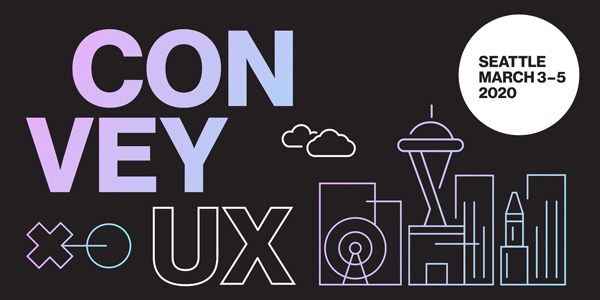How ConveyUX Can Convey Good Ideas
Last week I attended the annual user experience conference Convey UX in Seattle, where 50 UX leaders from all over the world shared their knowledge and experience across three full days. The conference was amazing! It gave the rare opportunity for conversations with professionals with diverse backgrounds, while providing a setting to share your thoughts and ideas.
 |
|---|
| image by Blink |
I had the opportunity to attend various presentations about design systems, collaboration, inspiration, challenges, pain points, strategy, design, and many more. Some of them I highlighted below.
Kathryn Parkes started the conference with her speech The Nature of Collaboration. She introduced her idea of how to find inspiration, along with examples of collaboration in nature. The suggestion was to bring those examples into the world of design. It might surprise you, but some of our inventions are not original or unique. Many of them already exist in nature. From Kathryn’s example, insects are the greatest nature collaborators. They not only work in huge numbers with common purpose and manage to solve complex problems, but also include highly specialized groups that are flexible enough to switch tasks when needed. They are self-organized, extremely resilient, agile, cooperative, communicative, and highly adapted to their environments. Are we as humans an organized society?
Jared Spool talked about growth stages of organizational UX and how companies grow from “Dark Ages” with no UX design to “Infused UX Design”, where every project team member has fluent design skills and concentrates on user needs. Getting to the highest point starts from recognizing the growth stage, and then focusing efforts on improving the growth stage of the lowest level influencers on the team. The “Shared Experience Vision” play is the key aspect to improved literacy and fluency. The final and most comprehensive play Jared suggested is to create a “Culture of Continuous Learning.”
Stephen John Ellis talked about team expectations and management with regular feedbacks, and central open transparency of progress. He proposed to brainstorm often, to work through ideas as a team, to ask around and learn what others have heard, and to understand the lay of the land in how others solve the problem. Moving towards a collective sense of the direction of the work brings the principles to the forefront.
Allison Matthews gave a very interesting and engaging speech about Designing for the Patients with real life examples. To create a better experience, first you need to find the root cause of the patient’s problem. For example, Alison and her team conducted an experiment, where they used a free text survey versus a multiple-choice survey. With the flexibility in the answers provided to the patient, the design team was able to establish a more efficient process that triaged patients better, shortened their itinerary lengths, and, in turn, made patients happier.
Ona Anicello and Aubrey Denevan showed how Alaska airline’s customer service needs (identified through collaboration and leadership championing) benefited through development of the Experience Map and Framework. They spent one year developing the Experience Map framework, which helped to solve problems for teams that were not even part of the focus group. Collaboration on creating a great user experience grew from basic journey maps. The biggest lessons they learned throughout the experience were related to establishing relationships across the company.
Catalina Manea talked about bridging the gap between UX and developers with an organic process building inclusivity, trust, understanding of process and pain points, regular smaller incremental process improvements, and terminology usage. She suggested that the lack of communication, collaboration, and transparency builds walls between the teams.
Mollie Cox and Adam Erickson demonstrated how designers and developers act, think, and speak differently, which can lead to confusion and frustration during the collaboration process. Understanding equals trust which is essential to real communication.
At the end of the conference I felt motivated and inspired by the UX community. I learned the importance of collaboration between teams. Indeed, the more people working on a problem, the more chance they will find the best possible solution and succeed in their efforts. Collaboration within a company helps people learn more about other teams and employees they wouldn’t usually interact with, which leads to a more personal environment and, as a result, a happier place to work.






